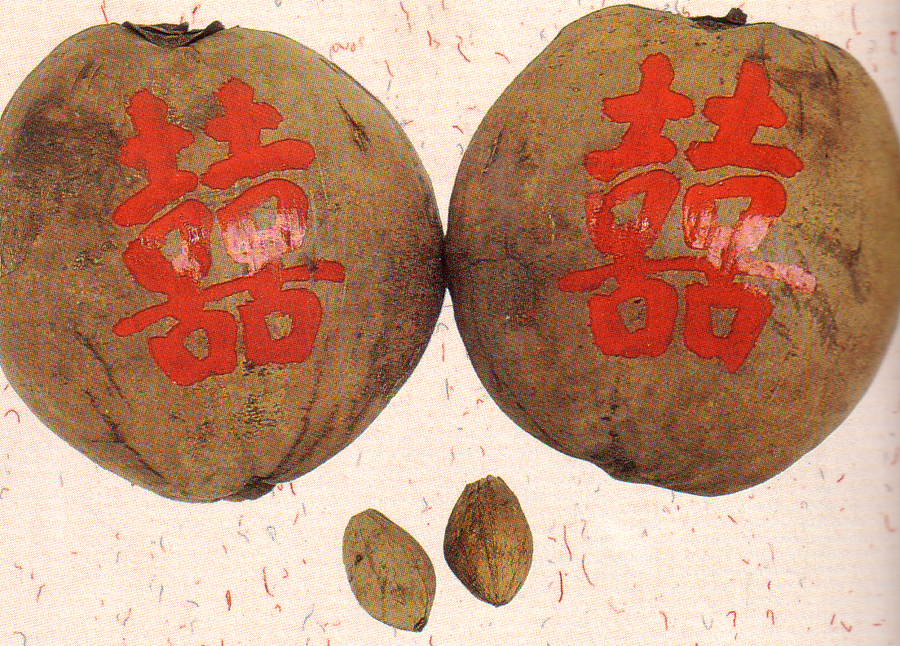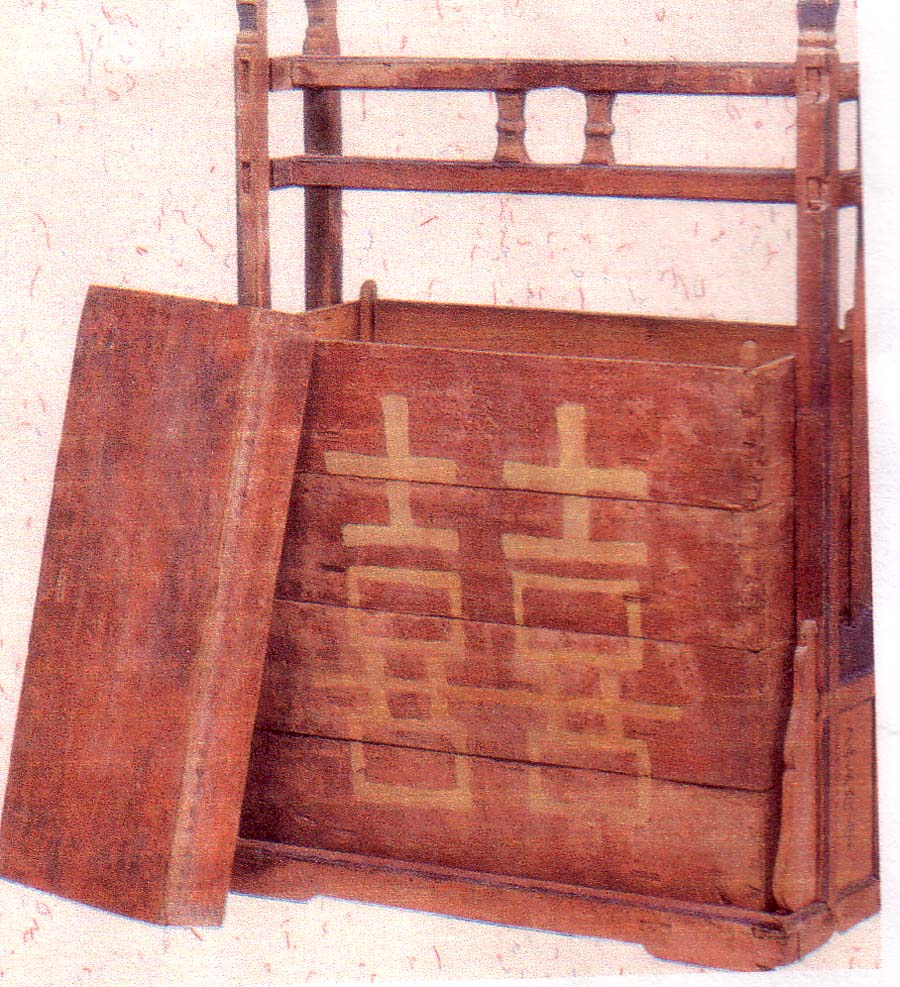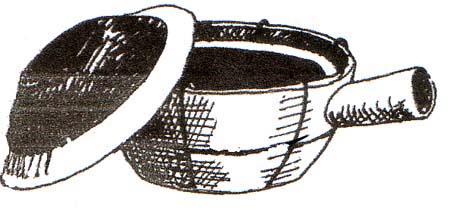|
Read 13036873 times
Connect me to:
|
TOPICS INCLUDE: Flushing article; Korean-Chinese food request; Mutton and bread soup; coconuts and betel nuts for weddings; sandpots; Pickled vegetables; Chinese in Europe; Root for bubble tea; Sweet potato use; Boar is last in the zodiacLetters to the Editor
Fall Volume: 2011 Issue: 18(3) page(s): 8 - 10
From: HESTER in MN, via e-mail:
Noted you once said you did not live in Flushing. But that was after you left working there, was it not? Perhaps you can explain why so many items about or from Flushing appear on the pages of this magazine?
HESTER: A fine question. For those that may not know, Flushing is in Queens, one of the five boroughs of New York City. This area is loaded with Asian markets and Asian restaurants, many of them Chinese. More than one-third of all residents in Queens are foreign-born, a large percentage of them are from Asia. In addition, Flushing has more different kinds of Chinese restaurants than virtually any other city or town in the USA. With a twelve percent increase in foreign-born Asians in all five boroughs, an eight percent in Queens since 2000, no wonder there are many Chinese restaurants in Flushing. These restauranteurs know that if one succeeds, it is wise to follow, and they surely have!
From MICHAEL in CA via e-mail:
Ordinarily would not ask, as yours is a Chinese food magazine, but you did open the door promising an article about Korean-Chinese food. Maybe you can advise what makes Korean omelettes and rice cakes green?
MICHAEL: This ingredient is a powder of the mugwort plant that is called hia in the Fujianese or Hokkienese dialect. It is the ingredient we think you are looking for. We purchased some when doing our book about Fujianese food called Cooking from China's Fujian Province. Bought it not in a supermarket but in a Chinese herbal store. Did not use much as half teaspoon per recipe did change the color of a bakery product. Did not include any recipes using this ingredient because very few herbal stores seemed to stock it. Do read about this herbal in the Newman's News and Notes column in an upcoming issue.
From ANNE in NJ, via e-mail:
Had a great dish at He Nan Feng Wei in Flushing (see Volume 18(2) on page22) called 'pao mo.' It was a kind of bread soup using one of the wheat bread items found on their counter. Either stale or toasted, it was torn into small bits and put in a pot of soup with small pieces of meat and vegetables. Did enjoy it. Do you have a recipe for it?
ANNE: Yang Rou Pan Mo is a dish we ate in Xian; it is known as a dish from the Shaanxi Province and called 'Mutton and Bread Soup.' In a restaurant in that city, the bread we had was not in the soup but next to it. My memory says it was either five or six inches in diameter, maybe half-inch thick, and it had sesame seeds sprinkled on top. The waiter showed us how to crumble the bread into our bowl, and after we did, he put thin slices of boiled lamb on top, and then added a pile of wide wheat noodles. After that, he used a pitcher to pour hot lamb broth over it all; it was seasoned with cumin and garlic. Those pieces of bread quickly soaked up the liquid. Next he stirred and topped it all with chopped cilantro. We grabbed our chopsticks and soup spoon and enjoyed this stew-like soup.
From LYMAN in CA, via e-mail:
  The article on weddings was wonderful, but you did not mention coconuts and betel nuts; are they not symbols of fertility and of importance to the Chinese? What about ‘tea’ presents, weddings to concubines, etc. The article on weddings was wonderful, but you did not mention coconuts and betel nuts; are they not symbols of fertility and of importance to the Chinese? What about ‘tea’ presents, weddings to concubines, etc.
LYMAN: To mention all wedding info we would need a book or two. Pairs of coconuts and betel nuts are symbols of fertility, see the wedding coconuts on this page with betel nuts below them. Other fruits and nuts in pairs are likewise symbolic in some regions. As to 'tea' presents, this nomenclature is used for gifts from the groom's family to that of the bride. There is a picture of an old box for them in the hard copy of this issue. Incidentally, if the bride's family accepts these gifts, that says they will not go back on the agreement between their daughter and the intended groom. We also did not mention, among other things, that the visit to the bride’s natal home, usually three days after the wedding, is a symbol the wedding and all associated rituals took place. Many families of the groom, at that time, send along a pig for her family that tells them the bride was a virgin. There were many other omissions including some families installing the marital bed, the marrying of a little-daughter-to-be who is usually one older than the groom, instances where no betrothal gifts are given because the bride is to be a concubine, times when money does or does not change hands, that concubines need to enter a side door and kneel before the groom's wife offering her tea, etc. Books are written about weddings, our forty-page magazine has limited space From SHIA in Arizona by fax:
 Know you wrote a great article about sandpots/claypots in 2000, but are they always unglazed on the exterior and glazed on the interior? Can you share a picture of them?
Know you wrote a great article about sandpots/claypots in 2000, but are they always unglazed on the exterior and glazed on the interior? Can you share a picture of them?
SHIA: Thanks for the compliment and the questions. Chinese sandpots, also called claypots, do come this way, we have never seen them any other way. As to a picture, here is a line drawing of one.
From MARTY via e-mail:
The Chinese restaurants I go to often serves us a pickled cabbage after we order. Are there other vegetables that can be pickled that way, and can you provide a recipe?
MARTY: Yes and yes. Here is an easy way to make a one-day pickled vegetable called pao cai and it is a delight.
From BEATRICE in the UK:
Read your item about few Chinese in Europe. Other than China, which countries have the most Chinese people? And, if we know this can we assume when traveling, where to go get good Chinese food?
BEATRICE: Large numbers of any ethnic group are no guarantee of good food. But, to answer your first query, outside of China which has a population of more than one and a third billion people, the next five countries with the largest Chinese populations--largest to smallest--are Indonesia, Thailand, Malaysia, Singapore, and the Phillippines. After them come the United States, Burma, Vietnam, Canada, and Australia, and then Cambodia, France, Laos, Japan, Panama, India, Germany, Brazil, and Brunei. According to the statistics we located, no other country has a Chinese population of more than one hundred thousand people. Enjoy looking for good Chinese food in these and every country.
From MARLA via e-mail:
Know you have written about bubble tea and its origination in Taiwan. Can you advise where the root of what it is made from comes from?
MARLA: For those less familiar, let me start explaining the main ingredient in bubble tea is the cassava plant. Some of the other names for this tea include boba, pearl tea, BBT, QQ, tapioca tea, milk tea (though not all varieties include milk), and zhen shou nai chai. The translation of boba is said to be colloquial for a woman's nipples. Also, bubble tea may or may not include real tea. Its bubbles look like round balls that require a large straw to suck them up from the bottom of their beverage container. Made from a tropical root, Manihot esculenta, and a prepared form of cassava, it came to Taiwan and China from South America via the Philippines in the 1800's. The manufacturing process makes them into balls (think tapioca) that need to be boiled for some hours. They become translucent and soft, are easy to swallow, and can be used in hot or cold beverages, but most often are in the latter. Some boba is made from an extract of jelly wort, a type of seaweed, but most are made from cassava mixed with a starch such as rice, corn, or sweet potatoes with brown sugar, and sometimes chrysanthemum or another flower, and/or one or more herbs. These bubbles can be added to soups, dim sum, or desserts. In the marketplace, some are labeled 'yam balls' but that is inaccurate. Most are black and tasteless, and often mixed with coconut, lichi, almond, sesame, red bean, melon, or the essence of another fruit flavor. Some of the newest ways to manufacture these balls includes making them in pastel colors. No matter their color, they are always gelatinous.
From HEDDY via e-mail:
Do you have any idea how long the Chinese Have been eating sweet potatoes? Also, beside cooking their delicious leaves, can you suggest other uses?
HEDDY: Most advise that the movement of the sweet potato, Ipomoea batatas, was done by the Spanish or the Portuguese, more saying the former than the latter. Some scholars say the Golden Plover bird regularly crossed the Pacific Ocean and could have carried its seeds. So could have sailors from South America. Another theory is that the seeds could have been on a raft drifting west on the ocean. A wild form of the sweet potato was found in a canyon in Peru circa 8000 BCE; and pre-Columbian remains have been found in Polynesia, the Cook and Easter Islands, and in Hawaii. So when the sweet potato actually first arrived in China is not definitive. As to the uses of this plant, there are many. So are there many names fo it. It is called hong shu, shan yu, fan shu, di gua, and any other Chinese name you may know. Medical practitioners report it improves qi, moisten lungs and stomach, and is prescribed to those vomiting blood or with blood in the stool. All parts of this plant are used in Chinese medicine, believed neutral when cooked, and cool when raw. It is prescribed in soups and stews. Two recipes follow at the end of these letters.
From LOUIS in Charlotte:
Is it true the reason the boar is the last animal in the Chinese zodiac because it is said to be lazy and because it did not respond quickly enough to Buddha when asked to race to the other bank of the river? And, why are there no Chinese recipes for boar?
LOUIS: Being last is the story told, being lazy not often discussed. And as to recipes, technically a boar is the wild pig, Sus scrofa. It is smaller than a domesticated one. Some male pigs are called boars. Recipes rarely ask for pig by sex. There are more recipes for pork than any other meat in the Chinese culinary. And, to end this tale, the next boar year (think pig) will be in 2019; after it, the animal cycle will begin anew with the rat who is said to have climbed on the back of the ox and jumped off when it reached the opposite bank of the river thus winning the race. |


 The article on weddings was wonderful, but you did not mention coconuts and betel nuts; are they not symbols of fertility and of importance to the Chinese? What about ‘tea’ presents, weddings to concubines, etc.
The article on weddings was wonderful, but you did not mention coconuts and betel nuts; are they not symbols of fertility and of importance to the Chinese? What about ‘tea’ presents, weddings to concubines, etc. Know you wrote a great article about sandpots/claypots in 2000, but are they always unglazed on the exterior and glazed on the interior? Can you share a picture of them?
Know you wrote a great article about sandpots/claypots in 2000, but are they always unglazed on the exterior and glazed on the interior? Can you share a picture of them?